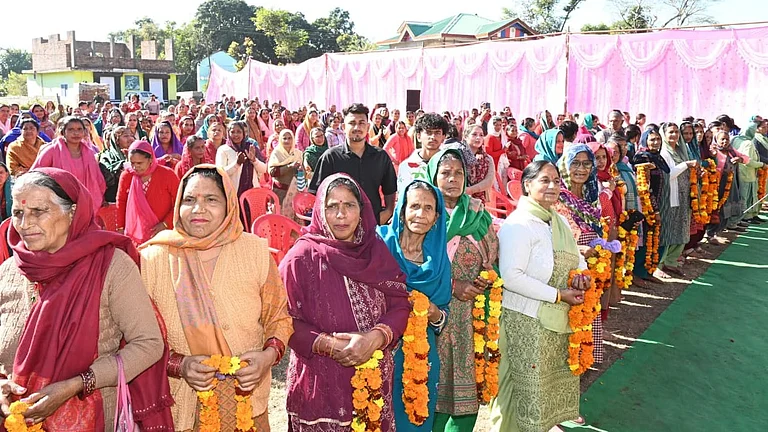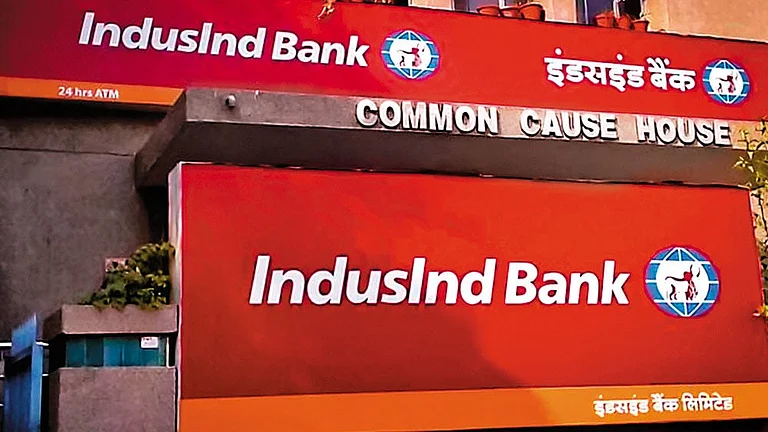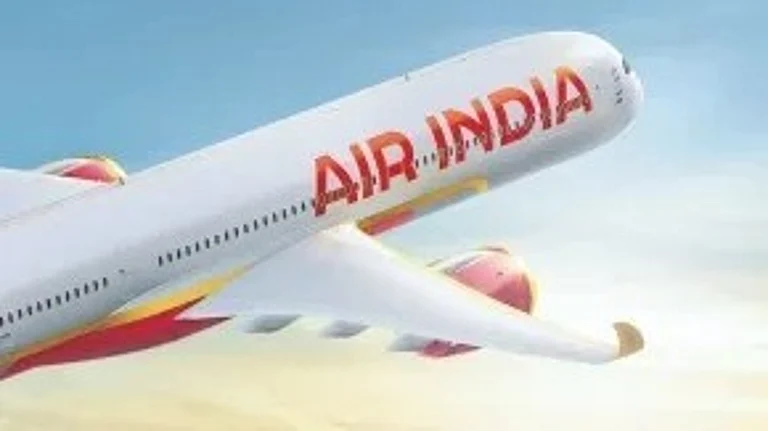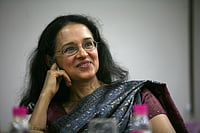Arun Kumar, an eminent economist, is the country’s leading authority on black money. Kumar taught at the Jawaharlal Nehru University till 2015. He had played a role in drafting VP Singh’s election manifesto. At present, he is the Malcolm S. Adiseshiah Chair Professor at the Institute of Social Sciences, New Delhi. In an exclusive interview, Arun Kumar discussed the aspects of the Indian economy and its underlying crisis with Rajat Mishra, Correspondent, Outlook Money.
In last 5 years the Indian economy has seen many ups and downs. How do you see the country’s economic condition at the moment?
The economy has been growing at 1% in the last 3 years.Since it’s an unorganised sector that got hit first by demonetisation, followed by GST and the NBFC crisis, it left an impact on the economy. With demonetisation sweeping the country, the small sectors such as cottage industries faced troubles since their transactions are majorly done via cash.The government calculates its rate of growth on the basis of organised sector data, whereas the data of the unorganised sector is published once in 5 years (last being 2015, the upcoming report will be published in 2020). I
n between, it is moving the data on the basis of Index of Industrial production, which is actually an organised sector data. Therefore, you are assuming that unorganised sector is growing at the same rate as the organised sector. But that is not correct. For example, the workforce data from the Center for Monitoring Indian Economy (CMIE) indicates a 10% decline, that is, from 450 million it has gone down to 410 million.
Thereby implying that people in the unorganised sector have not found job, hence, MGNREGA demand is quite high. That is why three years back the government spent Rs 38,000 crore and due to demonetization that went up to Rs 55,000 crore. So all these are indicators.
And if the unorganised sector is declining, which is 45% of GDP and Organized Sector, which is 55 per cent of GDP. Suppose that the economy is rising at 7% so 55% of GDP growing at 7% gives you +3.75% and 45% of declining gives you -4.5%. Therefore the rate of growth is negative, but if you add rate of growth of agriculture, which is at 3% then you get 1% rate of growth.
NBFCs are facing a very tough time, Liquidity crunch and inability to raise funds being just a few. How do you see this crisis and its impact on the larger economy?
Actually the slowdown in the economy started 3 years back, much before the IL&FS and DHFL crisis. So all the crisis in the economy are interlinked because of the unorganised sector, NBFC crisis being a part of the problem. Firstly, we have to understand that NBFC provides loans to the small sector, cottage sector,as well as the automobile and real estate sector. Hence, the real estate demand is stagnant. There is also a crisis in the automobile sector, as their demand is also not rising. There is also a crisis in FMCG sector. That’s all supports that why demand problem has come from unorganized sector to the organized sector.
Now, with the rate of growth being less than 1%, you have to tackle the liquidity crisis in NBFC or manage to get all the banks to cater to the small sector, they were not catering to the small sector as much. There should be proper regulation for NBFCs, and small banks should cater to small sector. Until you do all these things the crisis will continue.
Bank Consolidation has topped the agenda of this government. Do you think that these bank mergers are really beneficial for solving the NPA problem? How do you see these mergers?
The crony capitalism where the bank chairman’s are appointed by the government and are political appointees, are doing the bidding of the political party in power. Therefore, they give loans to the people and organisations, who are really not loan worthy. So, the risk is not assessed properly.
The merger is only going to make size of the banks bigger. Sometimes when they become very large, they also become unwieldy. And merging banks of a different culture can create its own set of problems. So, the real solution for the banking sector at this point is not merger, but what is required in the banking sector is transparency. More than anything, it’s the autonomy of the bank, their capacity to assess risk for lending out, that are very important. In fact, having more banks is probably better because they can cover rural areas better and the need for credit in the rural area is very strong. The need is to spread banking to the areas, which are not highly profitable areas.
You have seen economic conditions during UPA 1, UPA 2 and NDA 1. So, according to you who had successfully brought financial stability in the country. Who performed well in comparison to each other?
Many of the problems faced by the UPA 2, was external (oil prices rose because of which the current account deficit and inflation rose), but what led to lot of agitation and policy paralysis was their corruption. So to be fair, from 2012-2014, the economy was in very bad shape and it recovered by 2014 when NDA 1.0 took over. But this government is creating its own problem, for example, demonetisation, GST and all. So on these lines, UPA2 was much better than NDA 1 government.
Now, the external situation is again turning adverse because of the Brexit, trade wars between America and Europe, and between America and China, the levying of tax on Indian exports by America. So our problems are now going to get external also. But till NDA 1, the government created the problems. So UPA 2 regime was better than NDA.
In comparison to their predecessor, the NDA government has managed to keep a clean track record. Do you agree with that?
That’s not true at all. After all Rafael is a major issue. Now the public may not have accepted this, but there are charges of accusation on Rafael and then there is the Nirav Modi case. See, in UPA 1 where were the corruption charges? They all emerged in UPA 2. So, it takes 5-6 years for any corruption to get unearthed. Now, suppose there are bullet trains of Rs 1 lakh crore and at the moment we don’t know of anyone taking such an amount.
But it may be unearthed in the future. So, to say that no major charge has come is not true. And big corruption cases are revealed in 4, 5 or even 6 years time. So, 2G was happened in UPA 1, it got revealed in UPA 2, Coalgate was happening in UPA 1 it got revealed in UPA 2. If you remember, Manmohan Singh was given best the Prime Minister Award at that time, but later got castigated in UPA2, for policy paralysis and corruption. So one can’t say that nothing has happened. My suspicion is, at the level of the common man, corruption continues and some big scam will get unearthed over the period of time.






























